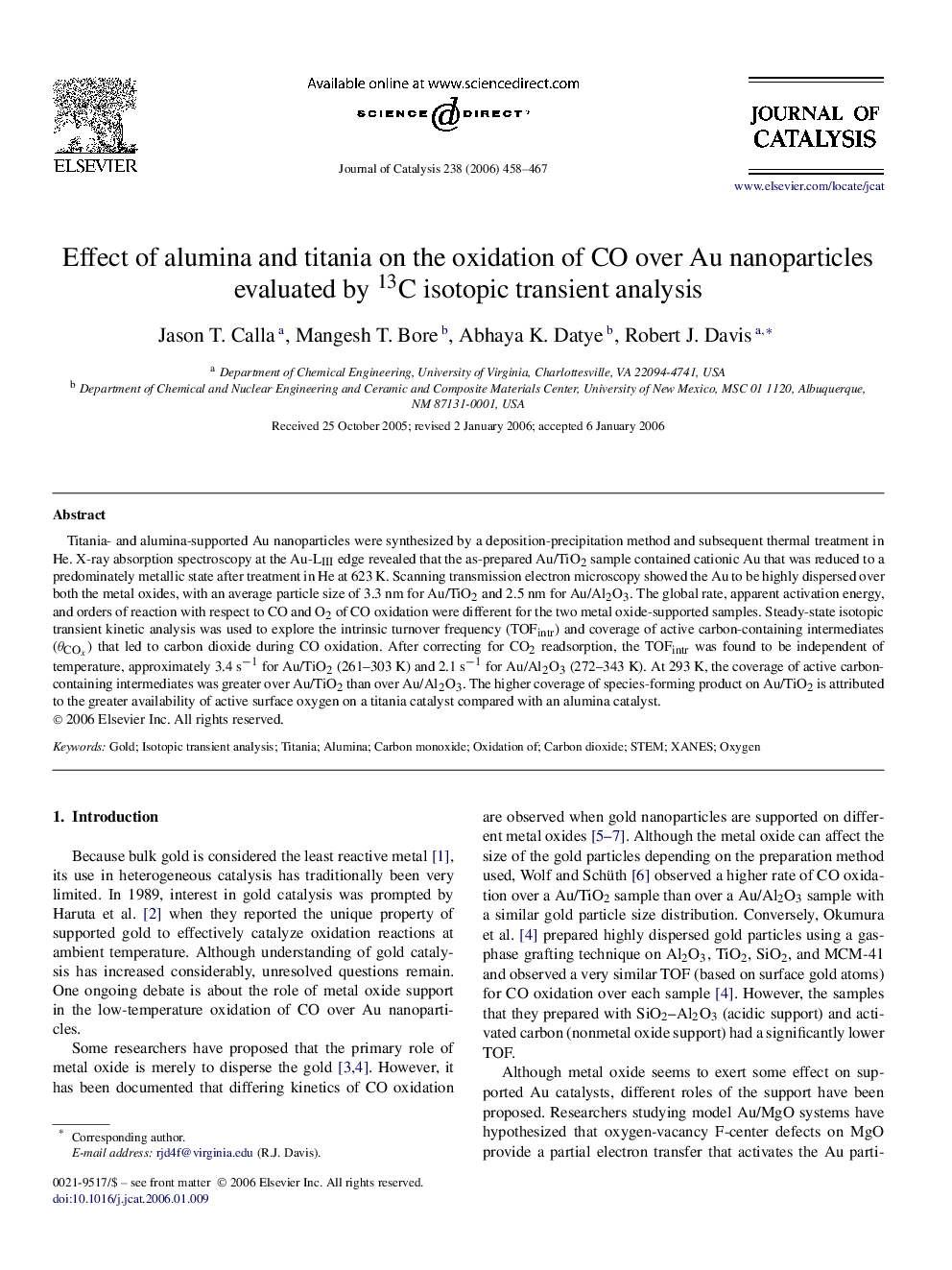| Article ID | Journal | Published Year | Pages | File Type |
|---|---|---|---|---|
| 63234 | Journal of Catalysis | 2006 | 10 Pages |
Titania- and alumina-supported Au nanoparticles were synthesized by a deposition-precipitation method and subsequent thermal treatment in He. X-ray absorption spectroscopy at the Au-LIII edge revealed that the as-prepared Au/TiO2 sample contained cationic Au that was reduced to a predominately metallic state after treatment in He at 623 K. Scanning transmission electron microscopy showed the Au to be highly dispersed over both the metal oxides, with an average particle size of 3.3 nm for Au/TiO2 and 2.5 nm for Au/Al2O3. The global rate, apparent activation energy, and orders of reaction with respect to CO and O2 of CO oxidation were different for the two metal oxide-supported samples. Steady-state isotopic transient kinetic analysis was used to explore the intrinsic turnover frequency (TOFintr) and coverage of active carbon-containing intermediates (θCOxθCOx) that led to carbon dioxide during CO oxidation. After correcting for CO2 readsorption, the TOFintr was found to be independent of temperature, approximately 3.4 s−1 for Au/TiO2 (261–303 K) and 2.1 s−1 for Au/Al2O3 (272–343 K). At 293 K, the coverage of active carbon-containing intermediates was greater over Au/TiO2 than over Au/Al2O3. The higher coverage of species-forming product on Au/TiO2 is attributed to the greater availability of active surface oxygen on a titania catalyst compared with an alumina catalyst.
